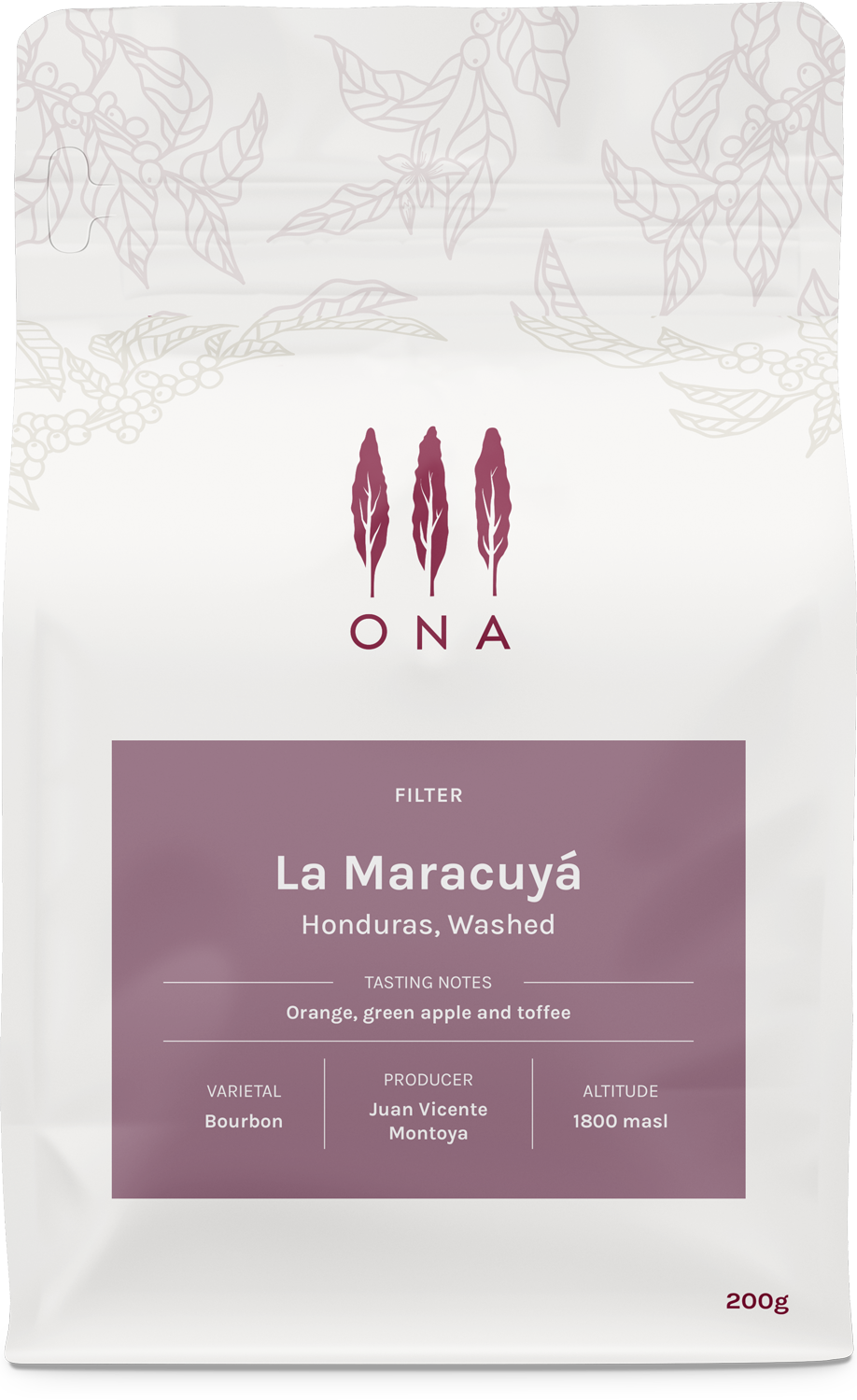

La Maracuyá, Honduras, Washed
- Regular price
- $20.00
- Sale price
- $20.00
- Regular price
-
- Unit price
- per
Orange, green apple and toffee
COFFEE PROFILE
This Washed, Bourbon lot has a transitioning sweetness, with notes of orange, green apple and a sugary sweetness similar to toffee.
| TASTES LIKE | Orange, green apple and toffee |
| ROAST | Filter |

Story
La Maracuyá, a small farm in Honduras, is owned and managed by the dedicated producer Juan Vicente Montoya. He has committed himself to enhancing the quality and reputation of Honduran coffee through meticulous microlot production. The farm is named after the passionfruit plants that thrive alongside the coffee, symbolizing the region's biodiversity and rich soils. Nestled at high altitudes in the fertile mountains of western Honduras, La Maracuyá predominantly cultivates the Bourbon variety, celebrated for its balance, sweetness, and elegant acidity.
During harvest, only the ripest cherries are handpicked and processed on the same day to maintain their quality. The fully washed lot undergoes a meticulous process: cherries are floated and hand-sorted before depulping, then fermented in tanks under controlled conditions to break down mucilage. This is followed by thorough washing and careful drying on raised beds to ensure uniformity and longevity in the cup. Such precision preserves Bourbon’s natural clarity, resulting in a coffee with clean sweetness, bright fruit character, and layered complexity.
La Maracuyá is more than just a single micro lot; it embodies Honduras’ evolution into a specialty coffee leader. Farmers like Juan Vicente Montoya embrace heritage varieties and precise post-harvest methods to produce coffees that consistently shine on the international stage, showcasing the potential and excellence of Honduran coffee.
| PRODUCER | Juan Vicente Montoya |
| REGION | Santa Bárbara |
| VARIETAL | Bourbon |
| PROCESS | Washed |
| ALTITUDE | 1800 masl |

Origin
Santa Barbara, Honduras
Coffee cultivation in Santa Bárbara, Honduras, began in the early 19th century, with families in Trinidad planting coffee at altitudes around 1,500 meters. Finca Jerusalén, founded in 1869 by the Fajardo family, was among the first estates, known for growing heirloom varieties like Gesha amidst lush mountain forests. Over time, coffee production expanded throughout the department, aided by fertile volcanic soils, abundant rainfall, and diverse microclimates.
Throughout the 20th century, Santa Bárbara’s farmers typically worked small plots, making coffee a cornerstone of local livelihoods. In recent years, the region has gained fame as one of Honduras’s premier coffee origins, with producers adopting specialty practices that emphasize careful variety selection, traceability, and meticulous post-harvest processes. This evolution has earned Santa Bárbara international acclaim, including multiple Cup of Excellence awards, and established it as a hub for sought-after microlots.
Institutions like the San Vicente Dry Mill have been crucial in linking smallholders with specialty buyers worldwide, fostering a culture of quality that draws on the region’s rich heritage. Today, Santa Bárbara is celebrated not only for its historical significance but also for its vibrant, family-led farms and expressive coffees, which consistently rank among Honduras’s finest.
BREW GUIDE
How to get the best tasting cup
NOTE THESE ARE A STARTING POINT AND INDICATE A RANGE TO WORK WITHIN
| Age Best Used | 7-20 days after roast |
| Brew Parameters | Dose 20g in a V60 and add 300g of water in 5 pours of 60g at 90 degrees C. Start with a 60g bloom for 35 seconds then allow water to drain through each subsequent time before adding more water, aim to finish at 3:00 |
| Best Freeze Date | 7-12 days after roast |






